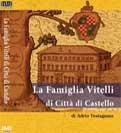| |
Angiola Romanini writes: “At the root of the Arnolfian art there is a “figure” in which all the reality is synthetically imbued. That synthesis is the reason why he belongs by rights to the gothic European civilization”. There are still many doubts about the art and the figure of Arnolfo. Since 1265 he was said to be pupil of Nicola Pisano, he was also identified as son of the legendary Lapo, that was a German architect, but was just during the last century that he was acknowledged as son of Cambio and born in Colle Val d'Elsa.
Despite the continuous attention of critics and the studies about him, this artist and the field of his art are still not easily definable. Arnolfo is undoubtedly an architect: he signed the ciborium of San Paolo Fuori le Mura in Rome, in 1285; he was engineer (demonstrated by his juvenile works for Carlo D'Angiò), town planner, sculptor and connoisseur of ancient times and maybe – as Romanini supposes – painter with the assumed name of Maestro di Isacco, who painted the famous scenes of the Basilica Superiore in Assisi.
Giorgio Vasari is the first that valorised Arnolfo: in his script “Vite” he defines him as a many-side artist able to restore dignity to architecture, after the “dark centuries”; moreover he said that Arnolfo had a basic role in the redevelopment of Firenze and in the foundation of the “new lands”: San Giovanni Valdarno, Castelfranco and Terranuova.
|
|














